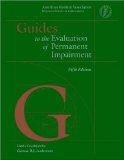WordPress – Not Just For Kids Any More!

A friend of mine owns and operates a number of websites – all of which run on ASP/.NET/MS-SQL servers. He knows what he’s talking about, but he’s fairly dismissive of WordPress, PHP, and MySQL.
All this time I’ve been raving about WordPress, telling him that you can basically do anything with it. I’ve mentioned how easy it is to use, how easy it is to maintain, its open source, how many global corporations use WordPress to build their websites, how its the tool of choice for so many designers, and how huge the WordPress community is.
In the meantime, he’s referring to his millions of rows in his “real-SQL, MicroSoft SQL” database. I believe he’s been stuck thinking of PHP and MySQL as “kiddie” stuff, just not ready for big time.
That is, he’s been dismissive of WordPress until about two months ago. In the last two months other people (SEO consultants, professional designers) have been raving about WordPress to him too.
I think he’s finally coming around.



